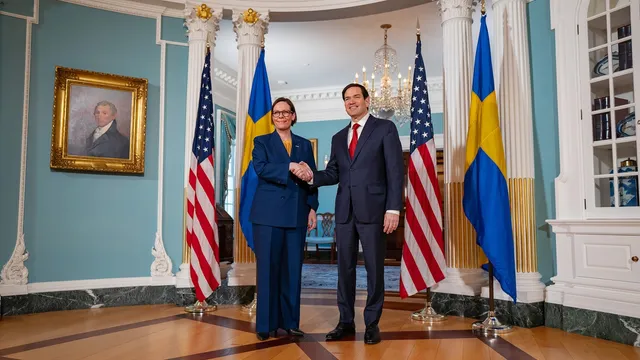
Russia poses a direct threat to the European Union according to Kaja Kallas
2025-06-21 11:16- Kaja Kallas warned that Russia poses a direct threat to the European Union through military aggression and cyberattacks.
- Russia's defense spending surpasses that of the entire EU, indicating a long-term military agenda.
- The situation necessitates increased defense commitment and cooperation among NATO allies to counteract Russian intentions.
Express your sentiment!
Insights
In recent statements, Kaja Kallas, the European Union's top diplomat, emphasized that Russia is directly threatening the European Union through acts of sabotage and cyberattacks. She pointed out that Russia's military spending is significantly greater than that of the 27 EU member states combined and indicated a long-term strategy for aggression from Russia. This statement came after a series of violations in airspace and provocative military exercises by Russia, as well as attacks targeting energy infrastructure in Europe. The growing military expenditures signify that President Vladimir Putin may use this military power elsewhere, potentially aiming actions directly against NATO. Kallas expressed concern for the security of Europe, insisting that significant and cumulative cyberattacks could provoke a response under NATO's Article 5 security guarantee, which ensures collective defense among member nations. Despite these threats, substantial actions still need to be taken by NATO and EU allies to create a more unified defense posture, especially amidst uncertainties surrounding U.S. foreign policy shifts toward other global security challenges. Leaders in different NATO countries are discussing new defense investment pledges that will increase spending on security amidst these concerns regarding Russia's intentions. As the BND chief highlights, tensions with Russia are escalating, and its movements are viewed as steps aimed at expanding its influence westward, reaffirming the need for proactive deterring policies.
Contexts
NATO's Article 5, which states that an armed attack against one member is considered an attack against all, continues to hold significant weight in the current geopolitical landscape. Introduced in 1949, this principle has been the cornerstone of the Alliance's collective defense strategy, shaping international relations and military policies among member states. In the wake of ongoing global tensions and conflicts, particularly in Eastern Europe and the Asia-Pacific region, the applicability and credibility of Article 5 are more pertinent than ever. The enduring commitment of NATO members to collective defense principles demonstrates not only a united front against potential aggressors but also acts as a deterrent to hostile actions from state and non-state actors alike. In recent years, challenges such as Russia's annexation of Crimea and increasing military activities in the Baltic Sea highlight the necessity of a robust response mechanism outlined in Article 5. As NATO members engage in enhanced deterrence measures, including troop deployments and military exercises in vulnerable regions, there is an ongoing discussion regarding the fulfillment of mutual defense obligations. The varying perspectives of member states on what constitutes an armed attack and the corresponding response demonstrate the complexities inherent in collective defense scenarios. This is compounded by the diverse military capabilities and political will of NATO allies, which can affect the collective response to aggression. Furthermore, the evolution of warfare, particularly with the rise of cyber threats and unconventional tactics, challenges the traditional interpretation of Article 5. These new forms of aggression may not fit neatly into the framework that defines an armed attack, leading to debates about the adequacy of current defense strategies. As NATO adapts to these shifting dynamics, it must ensure that its collective defense measures remain relevant and effective in countering emerging threats. Moreover, the Alliance's commitment to Article 5 serves not only as a security guarantee for member states but also reinforces the transatlantic bond between Europe and North America, which remains crucial amidst global shifts in power. Amidst these challenges, the role of NATO's Article 5 transcends mere military engagement; it embodies a political and symbolic commitment to collective security that reassures member states of mutual support. The ongoing discussions regarding the potential expansion of NATO, as well as the engagement with partners and allies, underscore the evolving nature of collective defense in the face of contemporary threats. In conclusion, NATO's Article 5 remains a vital component of international security architecture, adapting to new realities while reinforcing the principle that an attack on one is an attack on all, thus ensuring the stability of the Alliance and the security of its member states.